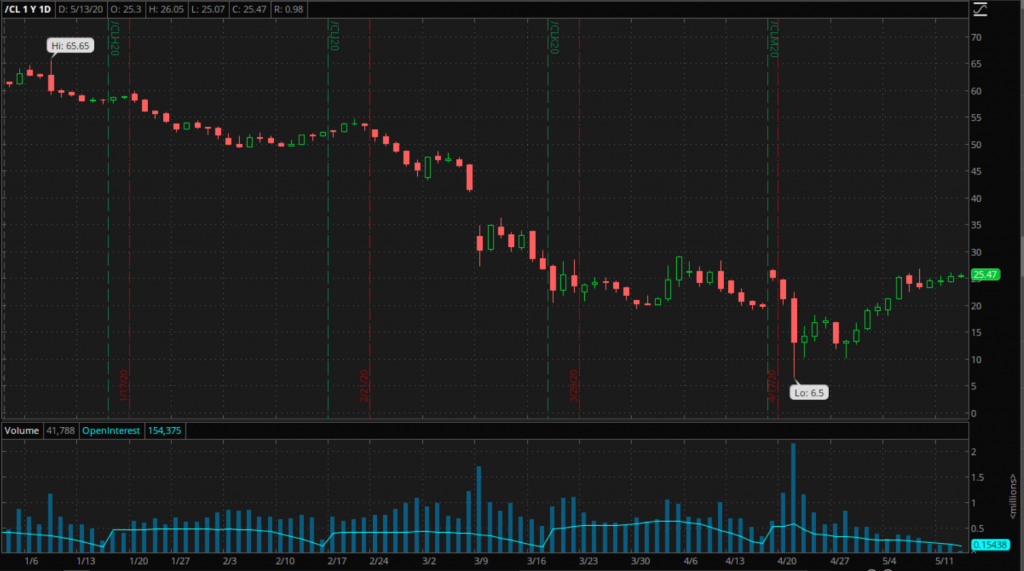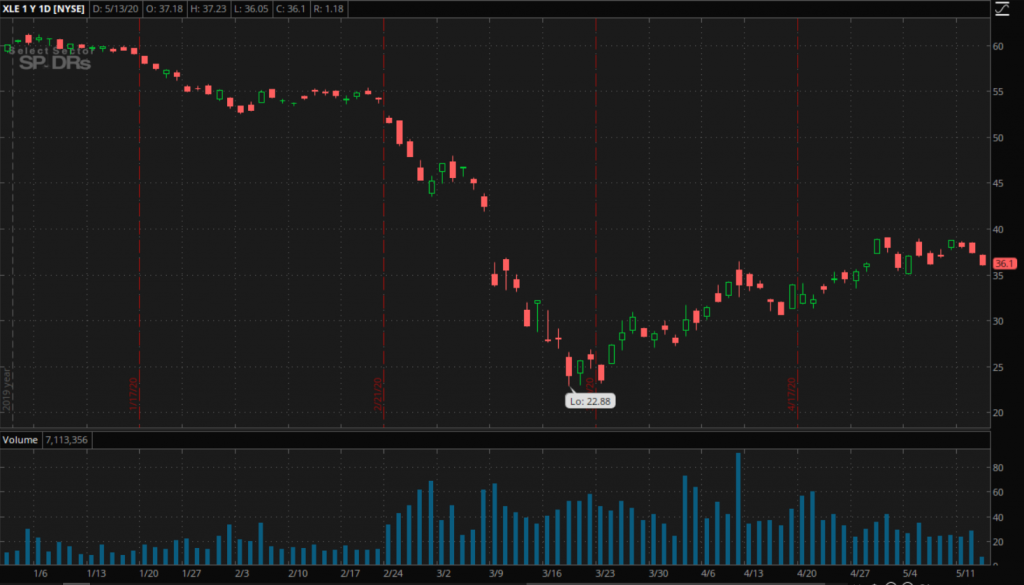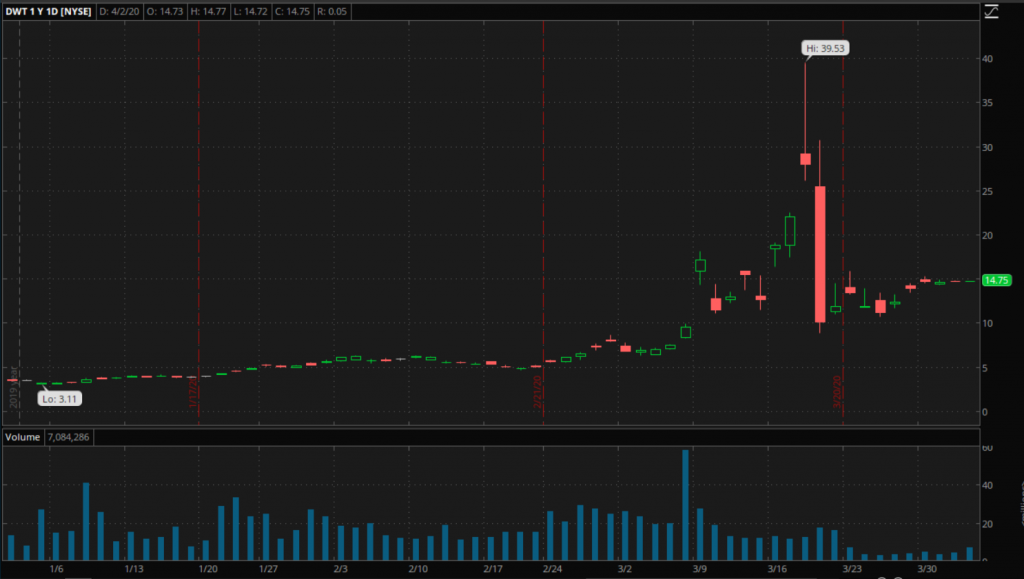Last week, I wrote that the issue that caused such dramatic price action in crude futures last month, as the short-dated contract expired, had not gone away, and, as a result, I favored a short bias in oil for a couple of weeks. Hopefully, you all understand that when reports surfaced that Saudi Arabia were instituting even larger cuts to production than those required by the latest OPEC+ deal, that changed the dynamic in the short-term and were able to at least cut, if not reverse, any short positions once the news broke.
Assuming you did, you may want to give the trade another try though, and if you didn’t, you might want to hold off for a little longer before you consider a chop.

Crude is Higher, But…
The main WTI contract, CL, has risen for four straight days as the rumors emerged then were confirmed, but there are a couple of things about that reaction that make me believe that before long we will be headed lower again.
First, there is the size of the move.
Those four days of intraday gains still leave us trading at levels that are a couple of bucks short of the April 7th high. Most of the time would see gradual sustained price increases like that as extremely bullish, but not in this case.
Fist off, markets have been extremely volatile recently, so a gain of ten percent over four trading days is really nothing to write home about. That is especially true when you consider what is driving crude higher.
The previously agreed cuts would have seen the Saudis reduce output by around 3.8 million barrels per day, but the additional voluntary cuts increase that number another million barrels. An orderly, gradual rise in WTI on news that the most influential OPEC country is unilaterally increasing production cuts by 25% looks to me more like a sign of some big underlying selling pressure than of a coming bullish surge.
Energy Stocks Are Lower
That impression is underscored if we look at how energy stocks have performed over the last few days. Normally, the average of those stocks, as expressed by something like XLE, the SPDR Energy Sector ETF, follows at least the direction of oil, even if it doesn’t exactly mimic moves in the commodity markets. In this case though, the exact opposite has occurred…

As oil has eked out gains over the last couple of days, XLE has turned tail and lost nearly seven percent.
There are logical reasons for that. Most of the big U.S. producers have interests in the Middle East, so an output cut in Saudi Arabia will limit their production at a time when low prices would otherwise see them increase output from relatively efficient wells in the area, for example. Also, cuts in Middle Eastern output have a somewhat limited effect on domestic pricing here in the U.S.
Even so, this should push global prices up over time, and the stock market tends to look forward.
We are seeing that now more than ever as stocks are rebounding rapidly as the U.S. economy is shrinking by at least a third and unemployment is at record levels. There is a belief that those things will be temporary and that the minute we can all get a haircut again everything will be fine. As you may have guessed from my slightly sarcastic tone, I’m not sure that will be the case, but it still demonstrates that traders tend to look beyond the short-term implications of any news.
Given that, you would expect energy stocks to be strong as action is taken to prop up prices, even if that does some immediate damage…but that isn’t what is happening.
What Does it All Mean?
Under normal circumstances doubling down on a wrong call, particularly one made wrong by news that changes fundamentals, is an unbelievably bad idea. However, as I seem to say several times a day right now, these are not normal circumstances.
In this case I’m not talking about the fact that entering stores with your face covered, something that was barred a few months ago, is now required. Nor that even my 82-year-old mother is now something of an expert on Zoom. As weird as those developments are, I’m talking here about what the market has indicated over the last few days.
In the face of a massive change to fundamentals that should push crude significantly higher, CL has struggled upward, and energy stocks have fallen. That suggests that as we near this contract’s expiration and storage once again becomes an issue, there will be a lot of downward pressure on oil.
How to Play It
Last week, I said that with two weeks to go in the front-end WTO contract, the prevailing conditions made a short bias advisable, but didn’t really merit an active short position from a swing trade perspective.
A week further in, however, and with further indications of trouble ahead, that has changed. I would now consider either a minimum sized short in futures so as to allow for a wide stop loss or a long position in a leveraged bear crude ETF such as DWT.

Some of the problems with leveraged oil ETFs have been on full view recently as the extreme market volatility left many of them essentially broken, unable to reflect moves in the underlying product. DWT, however, has at least got close to its expected performance and can be expected to gain quite significantly if oil does drop again.
That looks likely this week. Oil has moved up on news, but the way it has done so, and the price action elsewhere, suggest that it is a weak move and that a reversal is likely. As a result, I would certainly rather be short than long on oil, and an active short position looks to be a reasonable trade right now.
Cheers,

